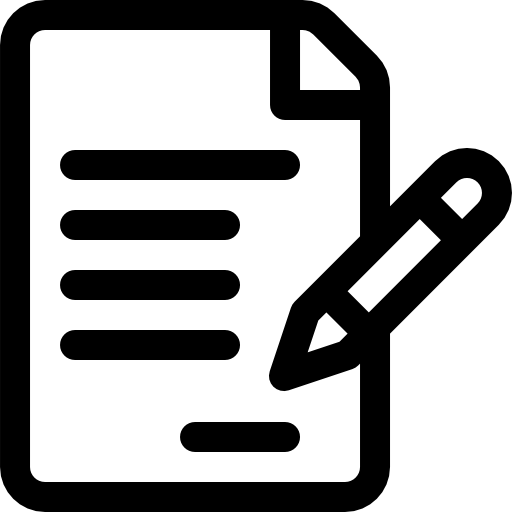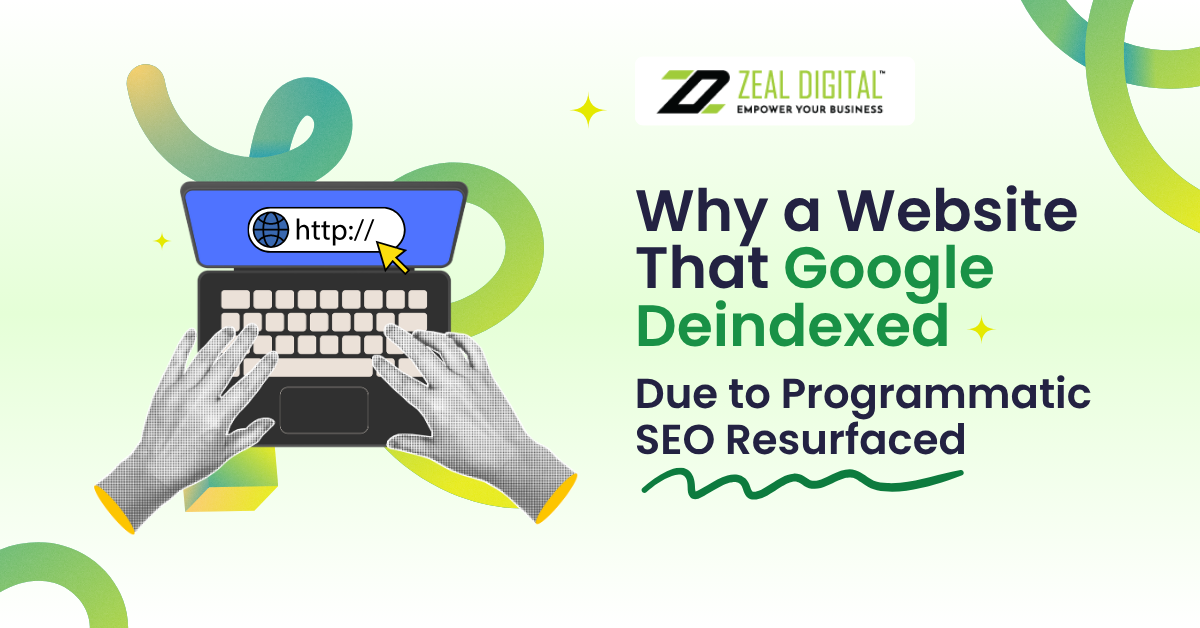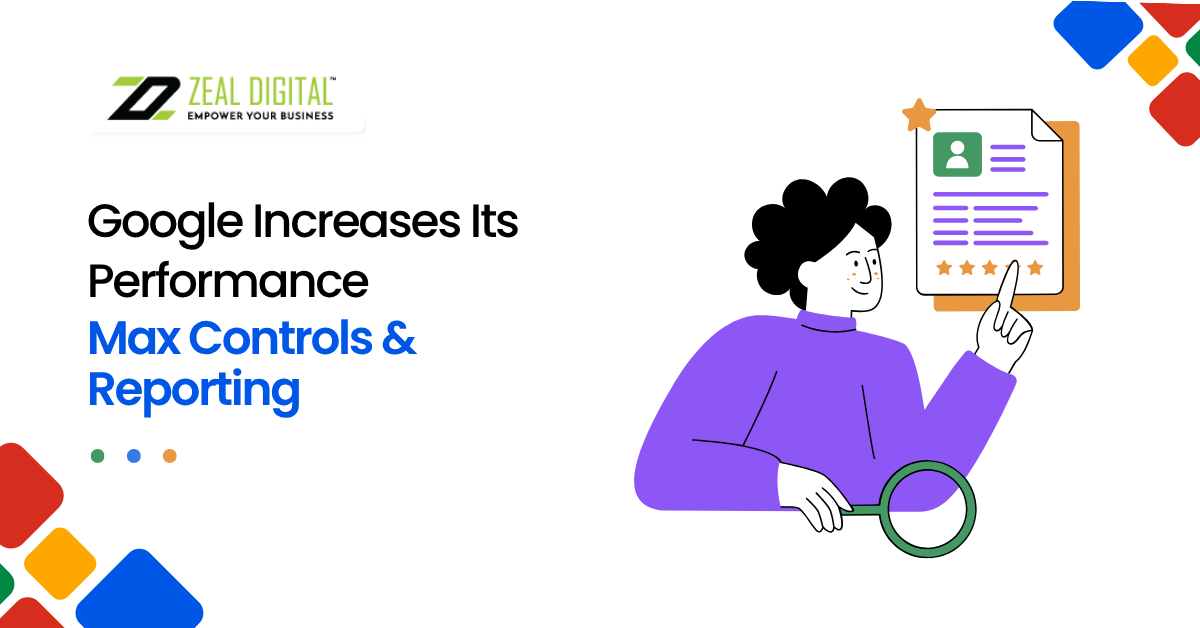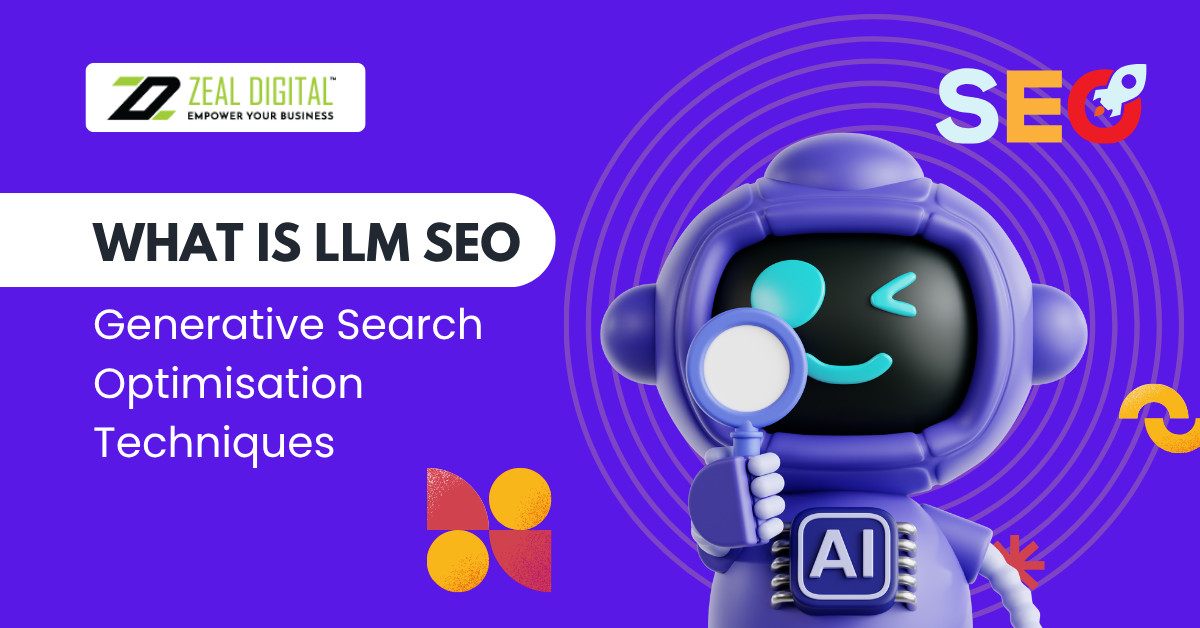In the field of search engines, there are few things as unsettling as Google fully deindexing a site. One day, some of the pages from a site are shown in search while the next day its pages are nowhere to be seen, erased without a trace and with no visibility or traffic in a day. This was the harsh reality faced by a site which heavily relied upon programmatic SEO, which is the strategy of automating content and targeting thousands of keywords.
What is most remarkable about this case isn’t the collapse; it’s the remarkable recovery. The site in question was able to resurface and once again, deindexed and targeted by Google, was able to regain visibility. This isn’t just a tale of warning. It’s a story about the balance between automation and authenticity.
Understanding Programmatic SEO
pSEO (programmatic SEO) is the practice of automating, templating, and dataset use to create hundreds or thousands of landing pages in deeply-lesser time frames. The approach is aimed at the long tail keyword sets, “best coffee shops in Sydney,” “best coffee shops in Parramatta,” etc.
Programmatic SEO works optimally as a strategy for growth if used in a proper manner. It works well for some travel sites, real-estate gateways, and e-commerce websites. Each and every page has real worth as it is supported by authentic information including user reviews, and maps, along with filters.
The problem starts, however, when automation is performed with an absence of a proper value in it. If the automation process leads to content that is recycled, animated, oversimplified, or fails to enrich the content, it is likely that it is picked by Google’s lower quality or spam filters.
This is the case with the site in question. The programmatic SEO configuration somehow spooked the site in question with thousands of pages of minimal differentiation and other such interchangeable materials. Demodulated forms, scant individual insights, an overload of keywords, and template themes were all present. Earlier theoretically, the results seemed very reassuring with an exponential rise in the impressions, an unbroken growing trend in the clicks, and the pages seemingly populating an uncountable amount of search requests.
Backend purposes and functionality are a design issue, not a content or informational one. Google deindexed the site and it was severely lost as a result.
Why Google Deindexed the Site
Google’s mission has always been clear: to serve the most helpful, trustworthy, and relevant content to users. Over the years, the search engine has refined its algorithms to detect patterns that violate this principle.
In this case, several warning signs triggered the deindexing:
- Thin and Low-Value Content
The website’s programmatic approach produced thousands of near-identical pages, each offering little more than a heading, a short paragraph, and a keyword variation. Google’s algorithms detected that the majority of these pages didn’t provide unique value.
Pages that merely repeat phrasing or rely on shallow templates often fall under “thin content” and when this pattern extends across an entire domain, Google may choose to deindex it altogether.
- Lack of Original Insight
Many pages failed to demonstrate any expertise or unique data. They didn’t include case studies, first-hand insights, or credible citations. Without this, the content didn’t meet Google’s E-E-A-T (Experience, Expertise, Authoritativeness, and Trustworthiness) framework.
- Excessive Automation Without Oversight
Automation in itself isn’t bad. However, when content is published automatically at scale, errors multiply quickly, plus there are broken links, duplicate tags, empty metadata, or incoherent copy. These signals indicate a lack of human supervision and degrade overall site quality.
- Poor Crawl Budget Management
Google allocates a finite crawl budget to each domain the number of pages its bots will visit and evaluate. When a site creates thousands of low-quality or repetitive URLs, crawlers waste time on pages that add no value. Over time, Google learns that crawling the site yields little benefit, and indexation begins to drop.
- Negative Engagement Signals
Low click-through rates, short dwell times, and high bounce rates can further signal to Google that the content isn’t satisfying users. These behavioural cues reinforce the algorithm’s decision to devalue or even remove the domain from results.
The Moment of Collapse
The site’s organic traffic graph told the story in brutal clarity: steady growth followed by a sudden cliff. Within days, the majority of its pages disappeared from Google’s index. The owner checked for manual penalties but found none. This wasn’t a punishment; it was an algorithmic judgement call.
In the eyes of Google, the domain had become a low-trust source. Its content footprint resembled spam: mass-produced, lightly-edited, and lacking depth.
Yet this isn’t where the story ends. Through strategic action, transparency, and rebuilding, the website managed to regain its place in the search results.
How the Website Resurfaced
Recovering from deindexation requires more than a few quick fixes. It demands a fundamental rethink of both content strategy and technical structure. Here’s how the recovery unfolded:
- A Complete Content Audit
The first step was a brutally honest evaluation. The team used site crawlers and analytics to identify every page that added no value. Thousands of URLs were reviewed, and many were deleted or redirected.
This wasn’t just about trimming fat; it was about reshaping the site’s purpose. Instead of targeting every imaginable keyword variation, the team focused on topics where the brand could genuinely contribute expertise.
- Consolidating Duplicate Pages
Instead of 100 near-identical pages each targeting a different long-tail keyword, the team consolidated them into comprehensive, authoritative guides. This improved user experience, concentrated authority, and signalled to Google that the site prioritised quality over quantity.
- Rewriting With Human Value
Automation was reintroduced but this time, responsibly. Every programmatically-generated template required human editing, context, and validation. The copywriters added original commentary, examples, and multimedia to strengthen perceived value.
For instance, where a page once contained only a generic summary, the revised version included data visualisations, FAQs, and case studies to demonstrate real-world insight.
- Strengthening E-E-A-T Signals
To rebuild trust, the site emphasised who was behind its content. Author bios were added with credentials, publication dates were made clear, and citations linked to reputable sources.
Google’s algorithms increasingly reward transparency when readers (and bots) can see expertise behind each article, credibility rises.
- Improving Site Architecture
The new site structure simplified navigation and made it easier for crawlers to discover and evaluate high-value pages. Broken links were fixed, duplicate metadata was removed, and internal linking was refined.
The focus shifted from quantity of pages to clarity of hierarchy ensuring every page served a distinct purpose within the broader site.
- Rebuilding Domain Authority
To restore authority, the team engaged in ethical link-building, earning mentions from relevant, trusted sources. Guest contributions, thought-leadership articles, and community partnerships helped the brand rebuild its reputation within its niche.
- Submitting for Re-indexation
After the major fixes, the sitemap was resubmitted to Google Search Console. Crawlers began revisiting the domain, and over several weeks, key pages started to reappear in the index.
It wasn’t instantaneous but progress was steady. By focusing on genuine user value, the site slowly regained Google’s trust.
What We Can Learn From This Recovery
The resurgence of a deindexed website teaches several important lessons for businesses navigating modern SEO.
- Quality Always Outlasts Quantity
Scaling content is tempting, but no automation can replace genuine insight. Each page should exist for a reason: to answer a specific question, solve a user problem, or provide information that isn’t already easily available elsewhere.
- Automation Must Be Guided by Human Oversight
Tools can accelerate production, but strategy and refinement must remain human-led. Editorial review ensures tone consistency, factual accuracy, and contextual richness qualities that algorithms still struggle to replicate.
- Google’s Algorithms Reward Intent, Not Just Output
The question isn’t “How many pages can we create?” but “How much help can we provide?” When your intent aligns with user benefit, Google’s systems detect and reward that effort.
- Recovery Is Possible, but Time-Consuming
Being deindexed isn’t necessarily the end. With transparent correction, authentic content rebuilding, and consistent quality improvement, trust can be restored. The process may take months but it’s achievable with persistence.
- The Future of Programmatic SEO Is Responsible Automation
Programmatic SEO isn’t dead. In fact, when combined with strong editorial principles and authentic data, it remains a scalable and efficient model. The future lies in “programmatic personalisation”; automating structure but infusing each page with real human value.
Key Takeaways for Businesses
These actionable steps will help maintain compliance and resiliency for any business that uses programmatic SEO or AI-assisted content creation.
- Regular audits of content will help mitigate liability exposure that comes with thin pages.
- Diverse data sets should aim to include unique elements, reviews, or insights that set each page apart.
- Full editorial control ought to be exercised. Every page, even if auto-generated, should be reviewed by a human.
- Focus on the E-E-A-T (Experience, Expertise, Authoritativeness, and Trustworthiness): Emphasise your expertise, the author’s prominence, and your experience throughout the site.
- Intelligent use of canonical tags, robots.txt, and sitemaps helps control index bloat by guiding Google to the most valuable pages.
- Track user engagement to identify page value that needs to be improved in order to retain attention. Poor usability signals a need for improvement.
- Practice genuine link-building, collaborate with respected websites, and maintain consistent cross-platform communication to foster brand trust.
These actions not only mitigate the risk of deindexation, but also ensure that the SEO foundation built will maintain the site’s sustainability and resilience.
A Glimpse Into the Future
Google’s evolving landscape tells a clear story: search visibility is no longer just about technical compliance, and correctness; it is about sincerity.
With the increasing use of generative AI and machine learning systems in search, engines are able to tell the difference between the content that is there and the content that is actually useful. Sites that are content with relying on just automation will continue to dwindle, while those that blend human domination with data-driven insights will continue to thrive.
For businesses, it entails defining SEO not as a single, end-line optimisation exercise. Rather, it is a sustained exercise in improvement of the intersection of creativity, technology, and ethics.
Conclusion
Restoring the story of the deindexed website that came back to life after the collapse of programmatic SEO, there is one point any rational human being cannot afford to forget: the road to redemption starts from the point of descent, the point from which recovery is sought.
Trust is built when automation is set aside and authenticity is embraced.
Any brand, and not just those aiming to recover, stands a good chance of visibility on the Internet in the future so long their practices are open, their editorial control is strong, and authenticity is the major focus.
And for businesses looking to strengthen their online footprint through sustainable optimisation, a strong local presence and expert guidance like professional SEO in Parramatta can make all the difference in maintaining long-term digital success.
FAQs:
2. What is programmatic SEO, and why is it risky?
Programmatic SEO automates the creation of large numbers of landing pages using templates and datasets. It’s useful for scaling content, but risky if executed poorly. When too many similar or thin pages are published without unique value, Google may see the site as spammy or manipulative, leading to partial or full deindexing.
3. How can I tell if my site has been deindexed?
The easiest way is to perform a site search on Google. If no results appear, your website has likely been deindexed. You can also check your Google Search Console for messages, indexing status, and crawl statistics that may indicate underlying issues.
4. Can a deindexed website recover its rankings?
Yes, but recovery takes time and a strategic approach. You must address the root causes like thin or duplicate content, excessive automation, and weak E-E-A-T (Experience, Expertise, Authoritativeness, and Trustworthiness) signals. Conducting a full content audit, deleting or consolidating low-value pages, and improving quality standards can help your site regain Google’s trust over several weeks or months.
5. What role does E-E-A-T play in programmatic SEO recovery?
E-E-A-T (Experience, Expertise, Authoritativeness, and Trustworthiness) is central to Google’s quality assessment. To recover, your website must demonstrate credible authorship, factual accuracy, and real-world expertise. Adding author bios, citing sources, and including first-hand insights can significantly strengthen these signals.
6. Is programmatic SEO still a viable strategy after Google’s updates?
Yes, but only when done responsibly. The key is value-driven automation: use templates for structure but enrich every page with unique data, human-written context, and multimedia. Responsible programmatic SEO combines efficiency with editorial integrity, ensuring content remains useful, authentic, and relevant.
7. How can businesses prevent deindexation when scaling content?
Businesses should maintain strict editorial controls, continuously monitor their crawl budgets, and ensure every page offers distinct value. Regular content audits, schema optimisation, and manual oversight help avoid thin or duplicate pages. Partnering with experienced digital professionals like a reputable SEO provider in Parramatta can ensure scalability doesn’t come at the cost of compliance or quality.





